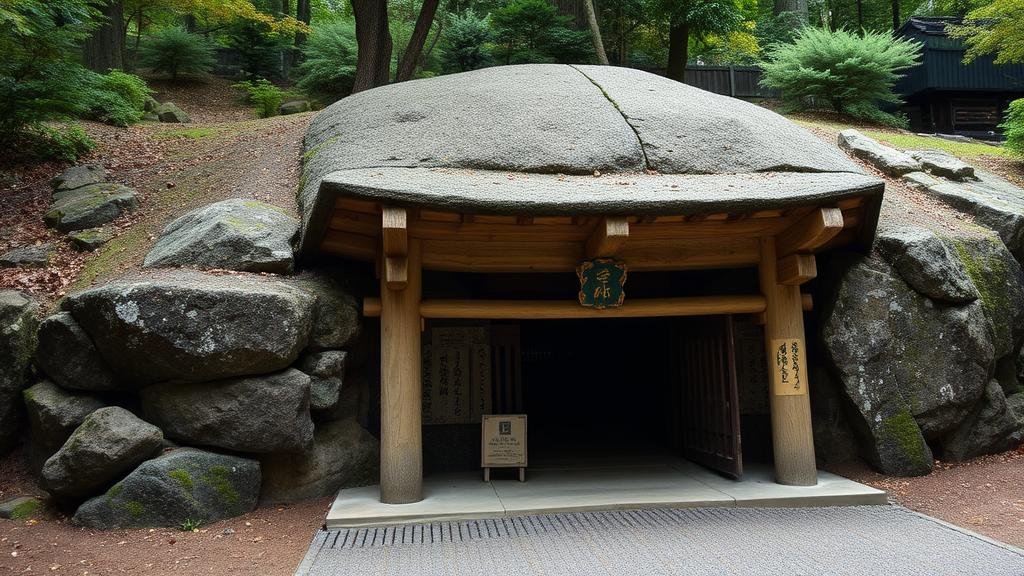Decoding the hidden message of the ancient Japanese Himiko tomb.
Decoding the Hidden Message of the Ancient Japanese Himiko Tomb
The ancient Japanese Himiko tomb, located in the Osaka Prefecture, is a fascinating historical site that has piqued the interest of archaeologists and historians alike. Believed to be the burial site of Queen Himiko, a powerful ruler of the Yamatai kingdom during the 3rd century, the tomb holds secrets that could shed light on the early Japanese civilization and its cultural exchanges with neighboring regions.
Historical Context
Queen Himiko reigned during a time when Japan was experiencing significant changes. According to the Records of the Three Kingdoms, a Chinese historical text, Himiko was described as a shaman queen who united various tribes in the region. mention of Himiko in these ancient texts provides a crucial link to understanding her influence and the political landscape of the time. Her tomb, known as the Entsuji Kofun, serves as a testament to the societal structure and religious practices of ancient Japan.
Physical Characteristics of the Tomb
The Himiko tomb is an example of a keyhole-shaped mounded burial structure, which is characteristic of the Kofun period in Japan (approximately 250-538 AD). The site spans about 300 meters in length and is surrounded by a moat, emphasizing its significance. Archaeologists believe that the tomb was designed not only as a final resting place but also as a representation of Himikos power and status. The construction reflects advanced engineering skills, employing techniques that would later influence subsequent burial practices across the archipelago.
Archaeological Significance
Excavations of the Himiko tomb began in earnest in the 19th century, but much of the site remains unexplored. Artifacts discovered thus far include:
- Bronze mirrors
- Pots and ritual vessels
- Tools and weaponry
These items give insight into the technological and cultural exchanges of that era, evidencing connections with the Korean peninsula and China. presence of Chinese coins suggests trade, while the mirrors indicate spiritual beliefs prevalent at the time.
Deciphering the Hidden Messages
Among the artifacts, the bronze mirrors hold particular import. These objects were often used in shamanistic rituals, symbolizing both the goddess of the sun and the afterlife. The mirrors may have contained inscriptions or designs that have yet to be fully deciphered, indicating a deeper spiritual and cultural relevance to Himikos rule. Historical linguists and archaeologists are working together to decode these symbols in hopes of unlocking further insights into the kingdom she governed.
Real-World Applications of Research
Understanding the Himiko tomb and its artifacts is more than just an academic exercise. The findings encourage contemporary discussions on:
- National identity and heritage in Japan
- Interpretations of ancient leadership and governance
- Cultural exchanges and their impact on modern society
This knowledge not only enriches the historical narrative of Japan but also contributes to the broader understanding of intercultural relations in ancient Asia.
Conclusion and Takeaways
The Himiko tomb is a treasure trove of information that can provide valuable lessons about early Japanese society and its complexities. As archaeologists continue their work, the tomb stands as a reminder of the interplay between politics, religion, and culture in ancient civilizations. For those interested in the past, the ongoing research and potential discoveries promise to unveil more about our shared human heritage.
In summary, the enigmatic Himiko tomb is not merely a burial site but a key that may unlock the secrets of early Japanese civilization. As more artifacts are studied and interpreted, we can expect a deeper understanding of Queen Himikos legacy and the historical context of her reign.



